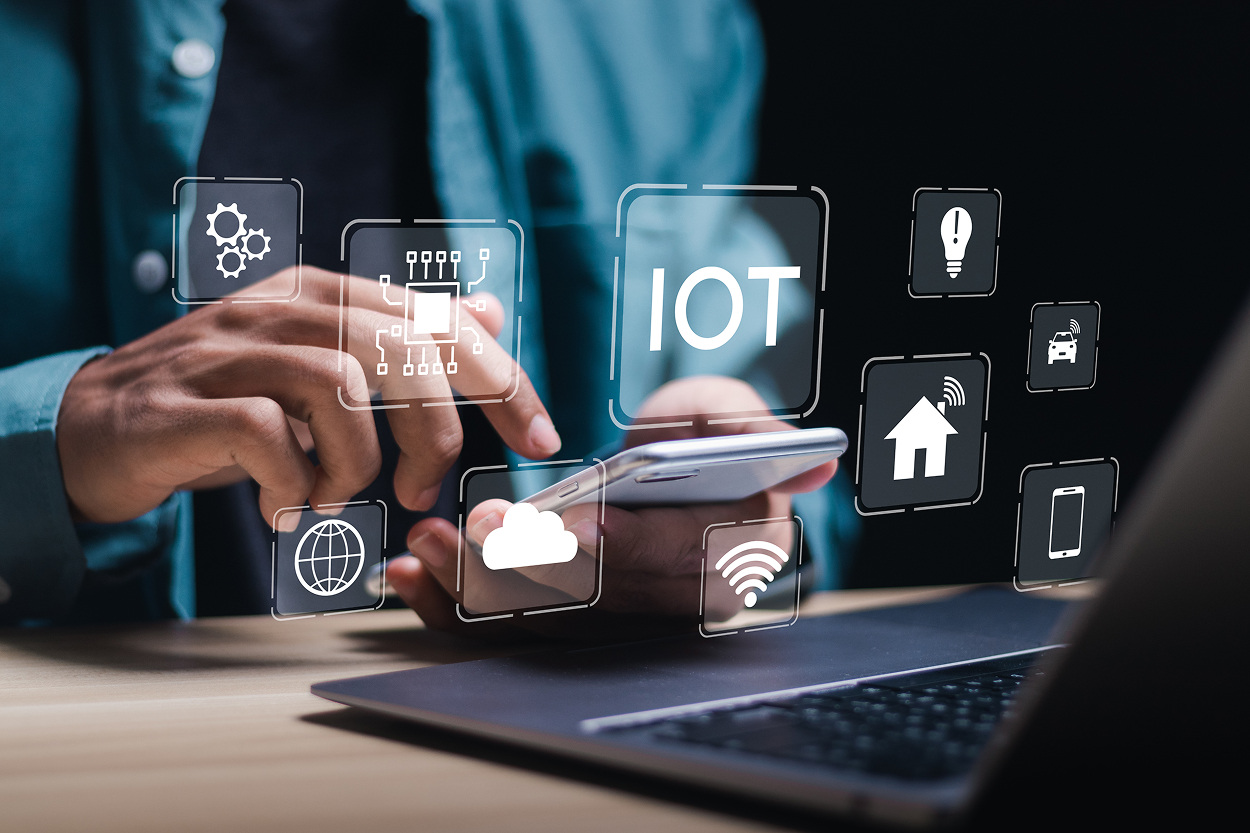Turning Distributed Devices into Collaborators: Federated Learning in IoT

IoT systems are proliferating fast—smart homes, industrial sensors, health wearables, autonomous vehicles, and more. Each device accumulates data unique to its context, environment, and user. Yet sending all that raw data to the cloud for centralized training is increasingly unacceptable—because of privacy, bandwidth constraints, or regulatory limits. Federated Learning (FL) promises a compelling middle path: local training at the edge, shared model updates, and central aggregation, all without exposing raw data.
But in real IoT deployments, the path isn’t smooth. Devices are constrained (compute, memory, energy), networks are patchy or constrained, data across devices is nonuniform, and privacy demands are nonnegotiable. The real challenge: maintain model quality, limit communication overhead, and safeguard privacy—all running on resource-limited hardware.
In this article, we will:
- Introduce federated learning and its appeal in IoT
- Unpack the core trade-offs between privacy and performance
- Review strategies and optimizations to manage those trade-offs
- Explore practical use cases across industries
- Offer best practices and architectural guidelines
- Look ahead at trends and challenges
By the end, you’ll have a grounded view of how federated learning can realistically empower edge AI in constrained IoT deployments.
Federated Learning: The Fundamentals
In federated learning, individual devices (or clients) train local models using their private data. Rather than uploading data, they send anonymized or obfuscated model updates or parameters to a central aggregator. The aggregator combines these updates—often via weighted averaging—and sends back an improved global model. Devices then incorporate the global model as initialization for further local training.
This paradigm introduces a loop: local training → update upload → global aggregation → distribution back → local refinement. Critically, raw data never leaves the device. That is the core privacy advantage.
From an IoT perspective:
- Devices maintain autonomy and privacy
- Network load is reduced because only model deltas are transferred
- Latency to inference stays minimal, as models run locally
- Edge adaptation becomes possible as devices adjust models based on local contexts
But this comes at a cost: communication, heterogeneity, convergence complexity, and resource constraints must all be managed carefully.
The Privacy–Performance Tension
Deploying FL in IoT involves navigating a landscape of intertwined constraints. Below are the major axes of tension:
Accuracy vs Privacy
Strong privacy techniques—adding noise, clipping gradients, or using secure protocols—reduce information leakage, but they also affect model convergence and final accuracy. The key is selecting noise scales, clipping norms, or secure aggregation thresholds that balance the risk of leakage and performance loss.
Communication Overhead vs Convergence Speed
Frequent model updates improve convergence rate but impose heavy communication burden—especially on devices with limited bandwidth or intermittent connectivity. Techniques like sparsifying updates, gradient quantization, or selective upload help reduce communication volume, but aggressive compression may slow convergence.
Heterogeneity & Non-IID Data
IoT devices often collect data in vastly different distributions. A global model trained on aggregated updates may not generalize well to “tail” devices. Solutions include personalization layers, clustering devices by similarity, or multi-task federated approaches.
Resource & Energy Constraints
Training models—even small ones—require CPU, memory, and energy. Devices in the IoT often prioritize low power consumption. Local training must be paced, scheduled, or limited to balance utility and battery life.
Fault Tolerance & Client Dynamics
In large federated systems, devices may go offline, drop updates, or misbehave. The aggregator must tolerate missing clients (dropouts), straggling updates, and possibly adversarial contributions.
Strategies to Balance Privacy and Performance
Here are a set of techniques and architectural approaches that help reconcile the constraints:
Differential Privacy & Noisy Updates
By injecting calibrated noise into local parameter updates and bounding the norm of gradients, devices can help ensure privacy guarantees. The challenge is tuning the magnitude of noise so it protects privacy without decorrelating useful signal.
Secure Aggregation
Secure aggregation protocols ensure that the aggregator cannot inspect individual updates—only aggregated sums. This prevents inversion attacks or leakage from intermediate results, but adds cryptographic overhead and some computational cost.
Compression, Sparsification & Quantization
Devices can compress updates (e.g. only transmit top-k gradients), quantize them (fewer bits per parameter), or use error feedback so that missing information is corrected in subsequent rounds. This reduces network load significantly.
Adaptive Client Selection & Scheduling
Instead of all devices participating in every round, the system may select subsets based on connectivity, battery level, or data freshness. This reduces load, lowers dropout risk, and improves overall system stability.
Personalization & Model Fine-Tuning
After global aggregation, device-specific fine-tuning (e.g. adding a small local head) helps reconcile global performance and local peculiarities. This is especially useful when data distributions vary significantly.
Federated Distillation / Knowledge Transfer
Rather than sending gradients, devices may send “soft labels” or distilled knowledge, which is often smaller and more robust to heterogeneity. This reduces communication and smooths divergence from non-IID data.
Hybrid Hierarchical Federated Learning
In large systems, a multi-layer aggregation structure may be used: local clusters aggregate into regional nodes, which then aggregate upward. This reduces latency and communication hop burden.

Use Cases Across Domains
Health & Wearables
Wearables can train health anomaly detection models locally, preserving user privacy. Local deviations (e.g. irregular heartbeat) are immediately detected, while model improvements are combined across devices without exposing raw health data.
Industrial Monitoring & Predictive Maintenance
Sensors on machinery detect vibration, temperature, or acoustic anomalies. Local models filter or flag deviations; aggregated models learn across factories to improve fault detection while respecting proprietary data boundaries.
Smart Home / Building Automation
Thermostats, motion sensors, occupancy detectors can collaboratively learn behavioral patterns in multiple homes. FL enables smarter energy optimization, occupancy prediction, or anomaly detection without exposing household data to the cloud.
Automotive & Connected Fleets
Vehicles train driver behavior or fault prediction models locally based on sensor logs, then contribute anonymized updates. Aggregated models improve across the fleet, while preserving user privacy and regional data constraints.
Architectural Blueprint & Best Practices
- Begin with lightweight model architectures
Use compact models (e.g. shallow CNNs, small MLPs) tailored for edge constraints.
- Implement efficient update compression
Apply sparsification, quantization, and gradient selection to reduce communication payloads.
- Adaptive client participation
Only devices with sufficient battery, connectivity, or fresh data should be selected in each round.
- Tune privacy parameters carefully
Gradually increase noise / clipping strength while monitoring accuracy.
- Support fallback centralized learning
In low-device-participation scenarios, revert to centralized training to maintain model utility.
- Track divergence & fairness
Monitor tail-device performance, per-group accuracy, and adjust aggregation weights or personalization strategies.
- Secure the update pipeline
Ensure encrypted channel, authentication, update validation, and rollback capability.
- Versioning, rollback, and safe updates
Model updates should be reversible; devices shouldn’t be bricked by incompatible model versions.
AI Overview: Federated Learning in IoT
Federated Learning in IoT — Overview (2025)
Federated learning allows IoT devices to train models collaboratively without sharing raw data, balancing privacy with performance. By moving computation closer to the edge, it reduces cloud dependence and unlocks real-time intelligence across distributed networks.
Key Applications:
Personalized healthcare wearables that protect sensitive biometric data, predictive maintenance in industrial IoT without central data leaks, connected vehicles learning from fleet data, and smart city devices collaborating on traffic or energy optimization.
Benefits:
Preserves user privacy by keeping data local, reduces network bandwidth and cloud costs, enables adaptive learning across heterogeneous devices, and improves resilience by avoiding single points of failure.
Challenges:
High variability of IoT hardware performance, communication overhead between devices, need for robust aggregation algorithms, and security concerns such as poisoning attacks or compromised participants.
Outlook:
- Short term: adoption in regulated industries like healthcare and finance where privacy is critical.
- Mid term: integration with edge AI accelerators for faster federated updates.
- Long term: federated learning becomes the default paradigm for IoT, combining local adaptation with global intelligence.
Related Terms: edge AI, on-device learning, privacy-preserving AI, federated averaging, distributed machine learning, secure aggregation, IoT data governance.
Our Case Studies





